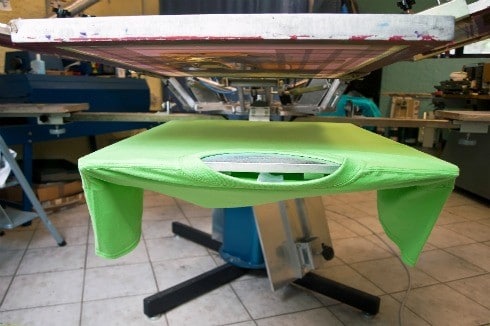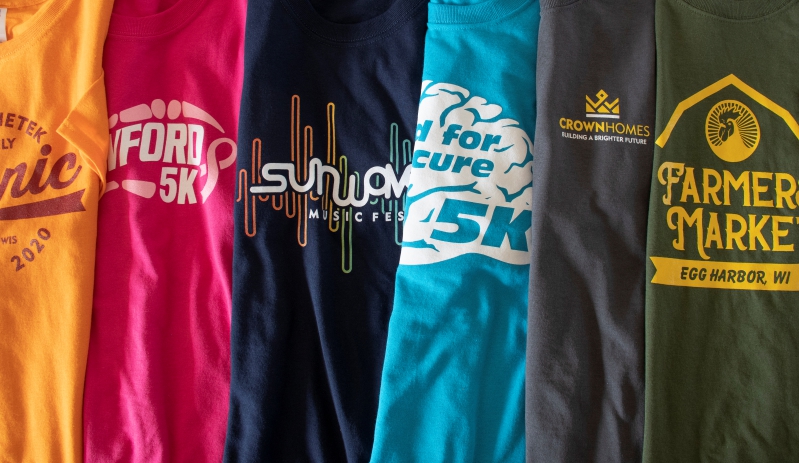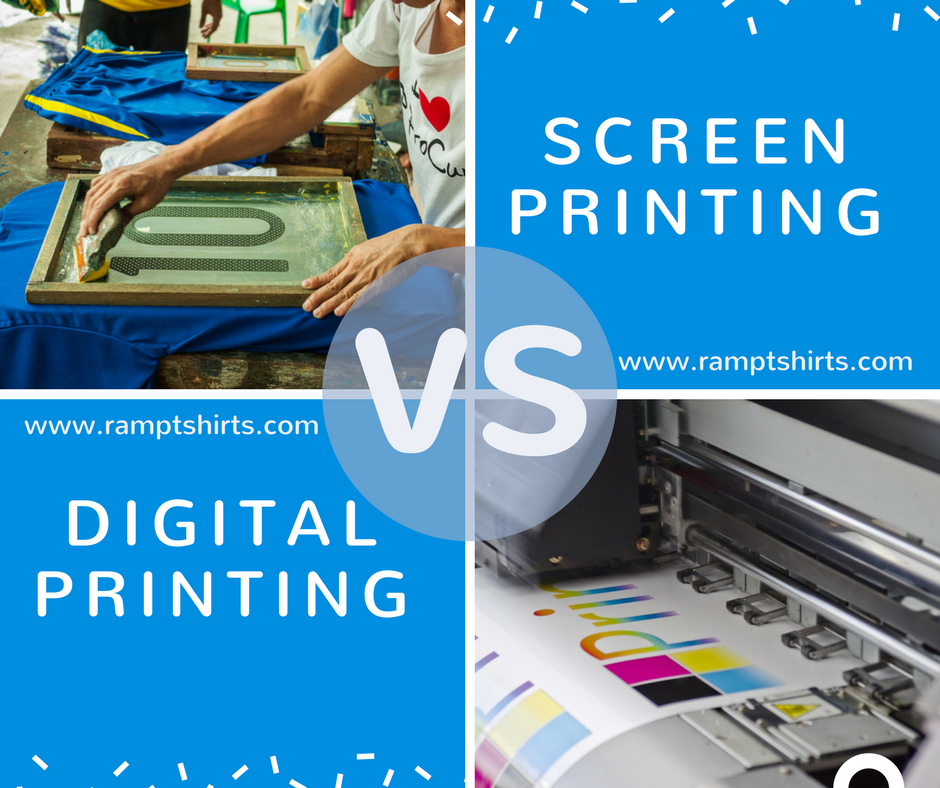Tx Tees Can Be Fun For Anyone
Tx Tees Can Be Fun For Anyone
Blog Article
The Tx Tees Ideas
Table of ContentsHow Tx Tees can Save You Time, Stress, and Money.What Does Tx Tees Do?Tx Tees Fundamentals ExplainedFascination About Tx TeesThe Basic Principles Of Tx Tees The Tx Tees StatementsThe Buzz on Tx Tees
That brings your total to about $1,900 gross and shipping. Include up other costs, like the variety of utilities it takes to run the store and the price of ink and emulsion per design. custom monograming. Take the print below for instance. This is a one-color picture, so the cost of ink per t shirt is around 20 cents.The emulsion should only be a few cents since you 'd only need to coat one display for this work. Usually, printers attempt to make up to 45% earnings on a print work.

With DTF, you can publish a handful of t shirts, or just one. Use the same calculator as the area above to calculate just how much revenue you 'd use DTF transfers. Contrast the expenses and earnings to whichever approach speaks finest to your configuration and process. Both display printing and DTF have their specific niches worldwide.
Not known Facts About Tx Tees
The very best means to know? Ask around and see what print stores like your own are doing. custom t-shirt design. Attempt both out and see which you like better
When you're choosing what sort of printing technique to make use of for publishing your art work designs on your garments, it is very important that you recognize the distinctions in between these two techniques so you can take full advantage of outcomes while decreasing costs. Screen printing is the most commonly used method for publishing layouts on fabrics.
DTG printing is also known as spot or direct to garment printing because it prints only what is needed as opposed to making a display as display printers do. https://www.pageorama.com/?p=txtees02. Display printing works by display filler squeegee screen printing ink display mesh screen, then moving the picture to garment using warm and/or pressure
The DTG printer utilizes unique dye-sublimation inks that are applied right into a pre-designed image by an electronic printing system. The inks enter into the fabric, enabling for dynamic shades and extraordinary detail. It's likewise called place or straight to garment printing because it publishes only what is needed rather than making a screen as screen printers do.
Unknown Facts About Tx Tees
Initially, it's much quicker - you can print a fullcolor image in minutes, rather than hours for display printing. Second, there's no set up time or expenses included - you can print any type of style you like, without having to produce a screen. Third, there's no waste - because screen printers screen print one design at a time, they need to screen each color separately.
The paper is very pricey and can just be made use of as soon as. Once it's published on, it needs to be disposed of. - The preliminary purchase price is lower than the ahead of time financial investment of DTG printers- You can publish multi-color styles one screen at a time rather than needing to publish each color individually like DTG printing.

Some Ideas on Tx Tees You Should Know
Rather of making use of display mesh as screen printers do, dye sublimation printers utilize laser modern technology to move your images onto garments or paper. A warmth procedure transfers the color from its solid-state straight right into the gas phase which consequently merges it onto textile substratums when they are rapidly heated to heats under high stress.
Sublimation printing is eco-friendly. It uses less water than screenprinting, and since it does not entail using hazardous solvents, it's risk-free for all kinds of clothing. The dye sublimation inks are likewise odor-free when healed, unlike display printers that make use of harmful chemicals during the screen printing procedure that leave an undesirable smell.
They additionally conserve cash on expensive devices like exposure systems because dye sublimation printers don't call for a UV exposure unit or a flash cure oven that is generally used in screen printing (custom cap printing). What is direct to garment printing (DTG Printing)? DTG printing is a digital screenprinting procedure that publishes straight onto material using specialized inkjet printers
Some Known Details About Tx Tees
DTG printing uses numerous advantages over standard screenprinting, including the capacity to print photo high quality images, better color vibrancy, and the capacity to print layouts on darker fabrics. DTG printers function by warming the textile ink till it becomes a gas. The gas then penetrates the fabric, bonding with the fibers to develop a long-term print.

Display printers just prepare their screen then begin publishing up until they run out of product or ink.- There is a large range of experienced display printers throughout the world, which can be valuable for novices. - It's a slower process - display printers usually need to wait on the ink to dry prior to they can publish the next color- Display printers need manual work, so there's a higher understanding curve and it takes longer to generate a top notch layout- Display printing isn't as accurate as DTG printing, so you might obtain some "blood loss" of shades from one component of the image onto an additional otherwise done appropriately.
Not known Details About Tx Tees
However, instead of using display mesh as screen printers do, color sublimation printers use laser innovation to move your pictures onto garments or paper. A warmth process moves the color from its solid-state directly into the gas stage which in turn merges it onto textile substratums when they are rapidly heated up to high temperature levels under high pressure.
Sublimation printing is environment-friendly. It uses less water than screenprinting, and since it does not involve the use of dangerous solvents, it's safe for all kinds of clothing. The color sublimation inks are additionally odor free when treated, unlike display printers that make use of dangerous chemicals throughout the display printing procedure that leave behind an undesirable odor.
They likewise save money on expensive tools like exposure systems because color sublimation printers do not require a UV direct exposure unit or a flash treatment oven that is usually used in screen printing. What is direct to garment printing (DTG Printing)? DTG printing is a digital screenprinting procedure that publishes straight onto fabric using specialized inkjet printers.
Our Tx Tees PDFs
DTG printing supplies numerous advantages over standard screenprinting, including the Visit This Link capacity to publish photographic high quality photos, better color vibrancy, and the ability to print styles on darker materials. DTG printers function by heating the textile ink up until it develops into a gas. The gas then permeates the textile, bonding with the fibers to develop an irreversible print.
Report this page